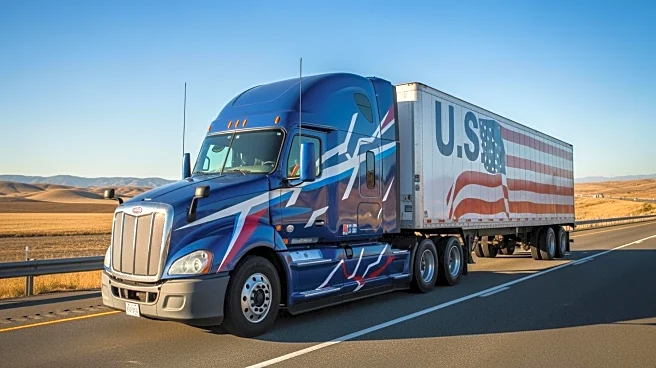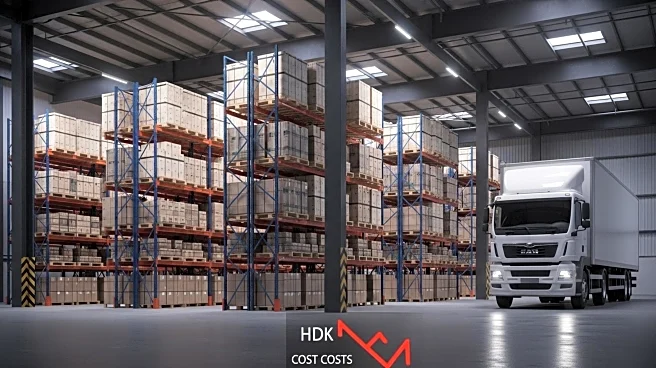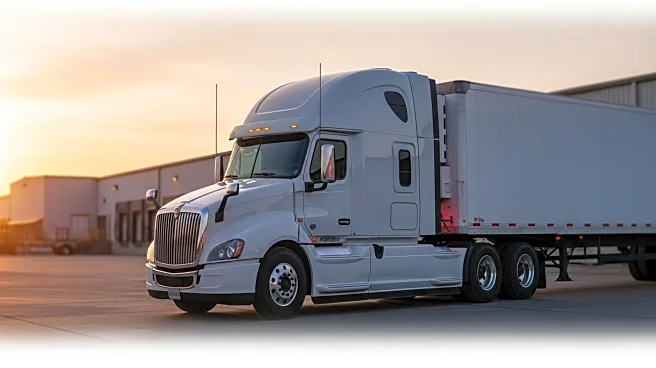What's Happening?
Recent reports from FTR and DAT indicate that U.S. trucking spot rates have stabilized following a period of increase. The national 7-day rolling average for spot rates rose slightly by under 2 cents week over week, reaching $2.07 per mile, which is 10
cents higher than the previous year. Flatbed rates experienced a minor decline of 1 cent, yet remain 0.4% higher year over year. Despite a 1.7% decrease in flatbed loads, volumes are still 27% higher compared to last year. Dry van rates fell by more than 4 cents, maintaining a nearly flat year-over-year change, while refrigerated rates increased by over 2 cents, marking a 4.5% rise from last year. These fluctuations reflect ongoing adjustments in the freight market as it responds to various economic pressures.
Why It's Important?
The stabilization of trucking spot rates is significant for the U.S. freight industry, which has been experiencing volatility due to economic factors such as fuel prices and demand shifts. Higher spot rates can lead to increased transportation costs for businesses, potentially affecting consumer prices and supply chain efficiency. The trucking industry plays a crucial role in the U.S. economy, facilitating the movement of goods across the country. As rates stabilize, businesses may find it easier to predict and manage logistics costs, which can contribute to more stable pricing for goods and services. However, the continued high rates compared to last year suggest that the industry is still navigating challenges that could impact profitability and operational strategies.
What's Next?
As the trucking industry continues to adapt to economic conditions, stakeholders may focus on strategies to manage costs and optimize operations. Companies might explore technological solutions to improve efficiency and reduce expenses. Additionally, industry leaders and policymakers could engage in discussions to address broader economic factors influencing freight rates, such as fuel costs and regulatory changes. Monitoring these developments will be crucial for businesses relying on trucking services to ensure they remain competitive and responsive to market demands.
Beyond the Headlines
The stabilization of spot rates may also have implications for labor within the trucking industry. As rates impact profitability, companies might reassess hiring practices and wage structures to align with financial goals. Furthermore, environmental considerations could come into play, as the industry seeks sustainable practices to mitigate fuel costs and emissions. These factors could drive long-term shifts in how the trucking industry operates, influencing both economic and environmental policies.













